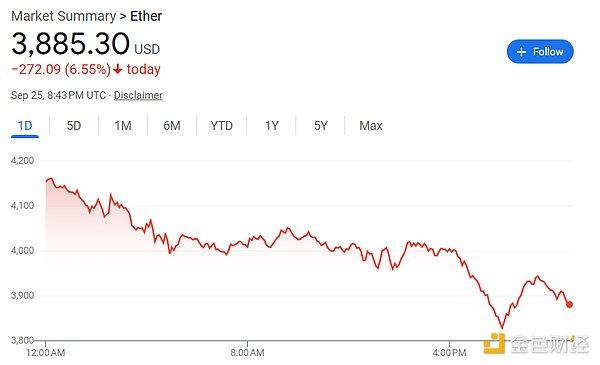
A honeypot in crypto is a type of smart contract that is intentionally created to trick users into thinking they can exploit a vulnerability and withdraw their assets, but in reality they lose the money they deposited.
In essence, honeypots are sophisticated scams in the cryptocurrency market. Attackers exploit users’ greed, creating “intentional” vulnerabilities in smart contracts to lure them into investing their assets and eventually take them.
- Honeypot is a smart contract that tricks users into thinking they can withdraw their assets but actually loses money.
- The mechanism of operation consists of three stages: contract deployment, exploitation of fake vulnerabilities, and the attacker withdrawing all assets.
- Avoid by checking audits, analyzing Token, projects, communication channels and keeping a cool head against “free profits”.
What is a honeypot in crypto?
A honeypot is a type of smart contract designed to deceive cryptocurrency users. On the surface, it appears to contain an easily exploitable vulnerability, but in reality only the contract creator can withdraw assets.
For example, a hacker programs a contract to look like a legitimate blockchain application. A user discovers a “flaw” that allows them to withdraw Token after depositing a certain amount of coins.
However, when executed, only the hacker has the right to withdraw. This is the “trap within a trap” nature of the honeypot.
“Honeypot is not only a technical scam, but also a psychological attack on greed and lack of vigilance.”
Vitalik Buterin, Founder of Ethereum , 2022
How does Honeypot work in crypto?
Honeypots typically operate in three stages: hackers deploy vulnerable contracts, users discover and attempt to exploit them, and finally hackers seize all assets.
In the initial stages, the generated contract looks very similar to a legitimate application, making users believe they have found a “golden opportunity”.
Then, when users transfer Token to try to withdraw their assets, the hidden vulnerability prevents them from withdrawing. Eventually, the hacker withdraws all the funds and disappears.
“Most honeypot scams exploit the greed of investors. They believe they are smarter than the system, but in reality they have fallen into a trap set up by the system.”
Chainalysis Report, Blockchain Security Report, 2023
Why are honeypots dangerous to users?
Honeypots are dangerous because they fool even the most technically savvy people. Users often only see the surface vulnerability and ignore the underlying mechanism.
CipherTrace's report (2022) shows that, among DeFi scams, honeypots account for about 10% with Medium losses in the millions of dollars.
This shows the dangerous, sophisticated and difficult to detect nature of this form.
Are honeypots related to Arm Virtual Machine and open source?
Honeypots are often stored on Arm Virtual Machine for easy recovery in the event of a malware attack. Additionally, many open source services also support honeypot deployment and management.
Users can find many honeypot projects on Github for research purposes. However, hackers have taken advantage of this openness to create dangerous scams in the crypto world.
How to identify and avoid honeypot scams?
The most effective way is to carefully analyze the smart contract before interacting. If the contract has not been audited or audited by an unreliable unit, the risk is very high.
Also, check the transaction history on the blockchain explorer: honeypot Token are often easy to buy but difficult or impossible to sell.
Checking the number of wallets held, the project's domain registration time, and the quality of content on social media channels are also important steps.
“Any project that promises quick, free returns should be considered a red flag. Smart investors should always ask: Why is it free?”
Changpeng Zhao (CZ), CEO Binance , 2021
How to evaluate the trustworthiness of a Token to avoid honeypot?
Evaluate the reliability of a Token based on factors such as whether there is an independent audit, whether the auditing unit is reputable, the number of wallets holding the Token, and the ability to buy and sell.
The table below compares some basic factors between secure Token and honeypot-risk Token :
| Element | Security Token | Token at honeypot risk |
|---|---|---|
| Audit | Audited by a reputable unit | No audit or poor audit |
| Trading capabilities | Easy to buy and sell on many exchanges | Easy to buy but difficult or impossible to sell |
| Number of wallets held | Thousands to millions of wallets | Only a few dozen to a few hundred wallets |
| Website & Media | Full and professional information | Sketchy, spelling mistakes, spam |
Frequently Asked Questions
Is honeypot a form of hacking?
Not really. Honeypots are deliberately designed scams that exploit user psychology rather than hacking the system.
Is a honeypot the same as a Rug Pull ?
No. Rug Pull happens when the developer runs away with the investor's assets, while honeypot is a contract that is set up from the beginning.
How to detect Token honeypot quickly?
Use a blockchain explorer to check the transaction history. If the Token is easy to buy but difficult or impossible to sell, it might be a honeypot.
Are there any tools to avoid honeypots?
Tools like Token Sniffer, BscScan or Etherscan help analyze Token and detect honeypot signs.
What psychology makes users susceptible to honeypot traps?
Greed and belief in “free opportunities” are the main reasons why many people fall into honeypot traps.








